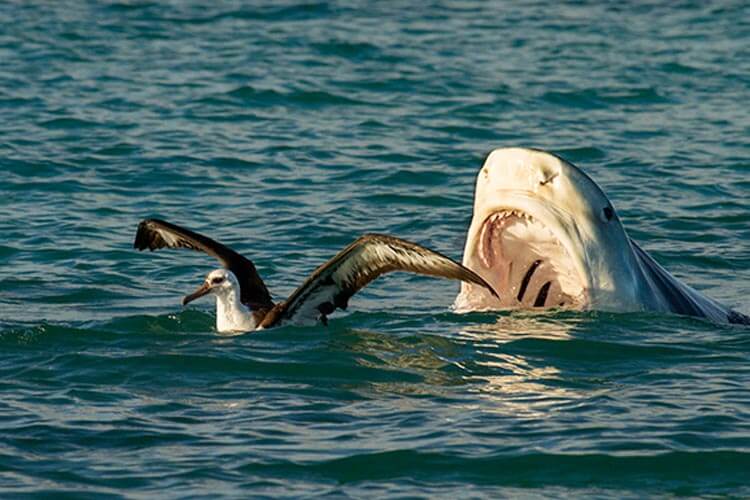
The Discovery Channel’s Shark Week 2023 starts on 23 July (Shark Week in the UK) and a new documentary, ‘Cocaine Sharks‘, is set to explore if sharks off the coast of Florida have been consuming drugs that are often dumped into the waters by smugglers.
Florida has long been a port of entry for illegal narcotics smuggled into the United States. The southeastern city of Miami in particular – often called the ‘drug capital of the world’ during the 1980s – was so overrun by the various Central and South American cartels that the notorious gangster, Pablo Escobar, owned a mansion there.
As a result of the long-established smuggling routes into Florida, the state’s coastal waters have become a dumping ground for narcotics – the result of failed shipments, destruction of evidence, and secret caches deposited at depth, ready to be collected by divers.
You may also like:
In June alone, the US Coastguard landed more than $186 million worth of narcotics retrieved from the Caribbean Sea and Atlantic coast of America; at the beginning of July, the Miami Herald reported the discovery of 87lbs (40kgs) of hashish and 62lbs (28kgs) of cocaine by two independent recreational boaters in the Florida Keys during the July 4 holiday weekend.
With a vast amount of known illegal drugs being deposited in the water, British ‘heavy metal marine biologist’ and broadcaster Tom ‘The Blowfish’ Hird, and NOAA research scientist, Tracy Fanara, set out to discover if they were having any impact on the local marine life.
During the making of the ‘Cocaine Sharks’ documentary, the team deposited fake bales of drugs into the water next to fake swans, and found that the fake bales of drugs were targeted first by the sharks. One shark was filmed swimming away with one of the bales between its teeth.

Another experiment involved dropping more fake bales of cocaine from an aircraft to simulate a real-life smuggling operation, which attracted the attention of tiger sharks, amongst others.
Hird and Fanara also dived with the sharks to see if they exhibited any unusual behaviour underwater. A great hammerhead, (Sphyrna mokarran), described as ‘swimming on the one side, almost like she’s weighted down, [and] not quite levelled’ approaches the team directly – which they describe an uncommon behaviour for the species – and a sandbar shark (Carcharhinus plumbeus) appears to be swimming in tight circles near to a shipwreck, apparently fixated on something that isn’t there.
During the documentary, Hird and Fanara explain that the results of their experiments ‘[do not] necessarily show that the sharks in Florida are consuming cocaine’, stating that there are a number of different factors that may explain the unusual behaviour.
Lopsided swimming could be explained by any number of factors. It is commonly seen in bony fish with swim bladder disorders, and although sharks do not have a swim bladder, it’s possible some other injury or disease might have been affecting the shark’s buoyancy.

Sharks are also extremely sensitive to electric fields and have a keen sense of smell, so the sandbar shark swimming in circles may well have been fixated on something that the human divers simply couldn’t see.
There are, however, studies that show marine life is increasingly affected by drugs in the water, both legal pharmaceuticals and illegal narcotics. A 2022 study by the Bonefish and Tarpon Trust and scientists from the University of Florida found a total of 58 different pharmaceuticals present in a sample of 93 bonefish, with an average of seven different chemicals per fish and one fish containing 17.
Among the pharmaceuticals present in the fish were blood pressure medications, antidepressants, antibiotics, pain relievers, antihistamines and opioids.
Nevertheless, the chances that the dumped cocaine and other drugs are having some impact on the local wildlife is significant, and Hird said he hopes the documentary will lead to more research in the area, including tissue and blood sampling to determine if there is cocaine – or other pharmaceuticals – present within the sharks’ bodies.
‘Cocaine Sharks’ will be broadcast on the Discovery Channel US at 10 pm (ET/PT) on Wednesday, 26 July; and 9 pm BST on Thursday, 27 July in the UK.
- Generations Below – a father-son team working to build a global underwater treasure hunt - 11 November 2025
- ‘Death ball’ sponge among 30 new Ocean Census species discoveries - 10 November 2025
- Thomas Kenny’s family launches fundraiser for inquest into his death - 7 November 2025


